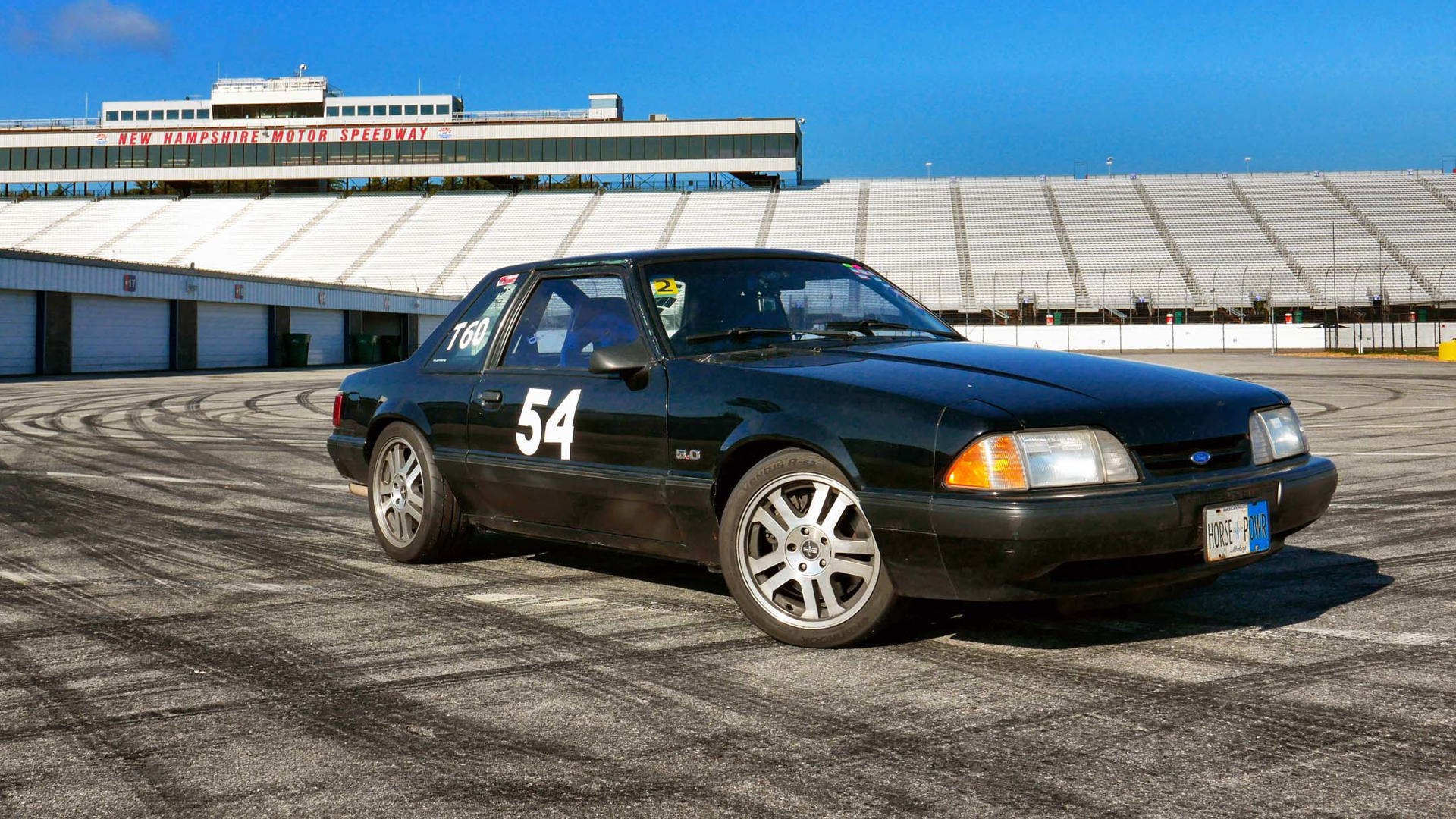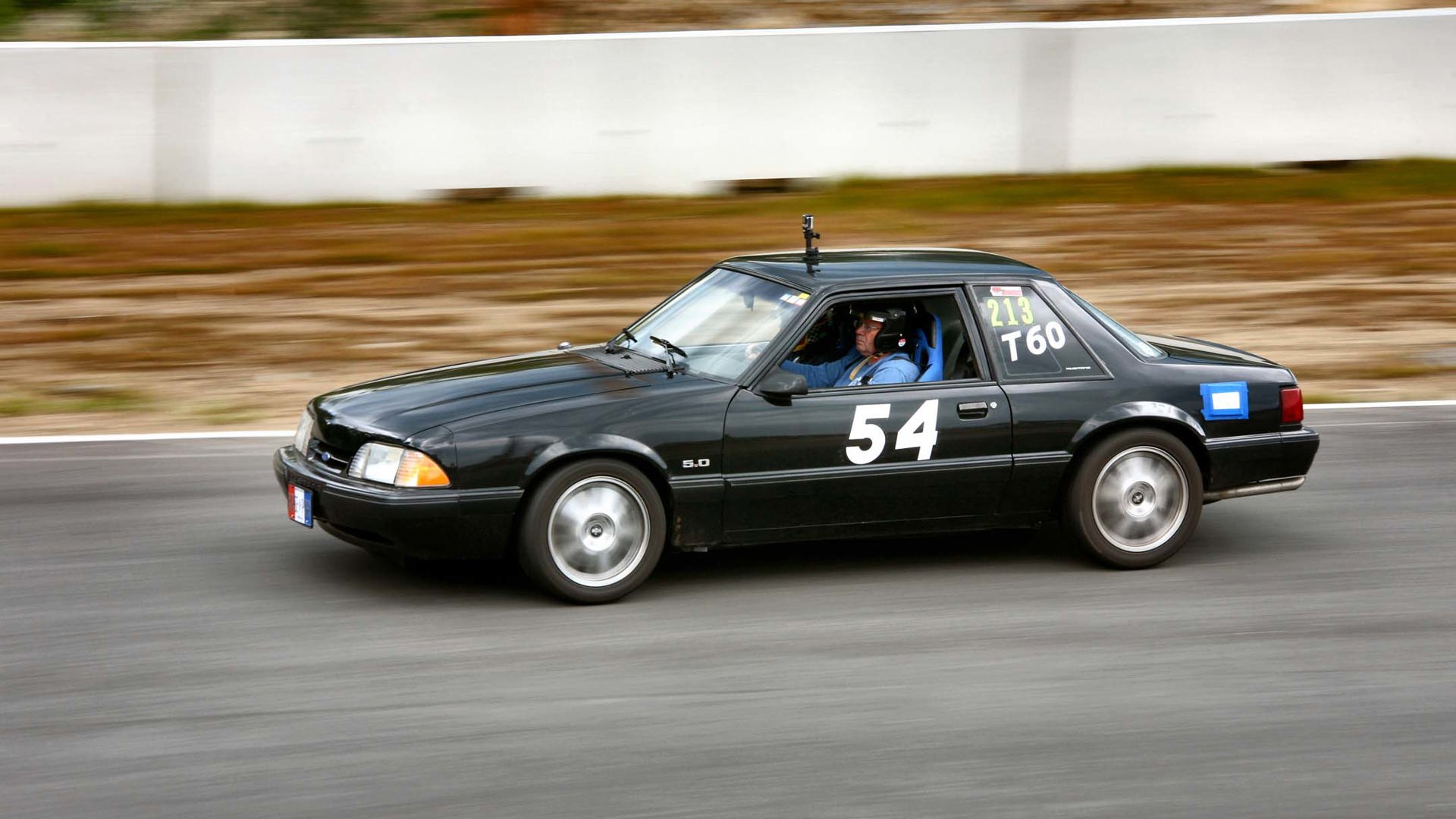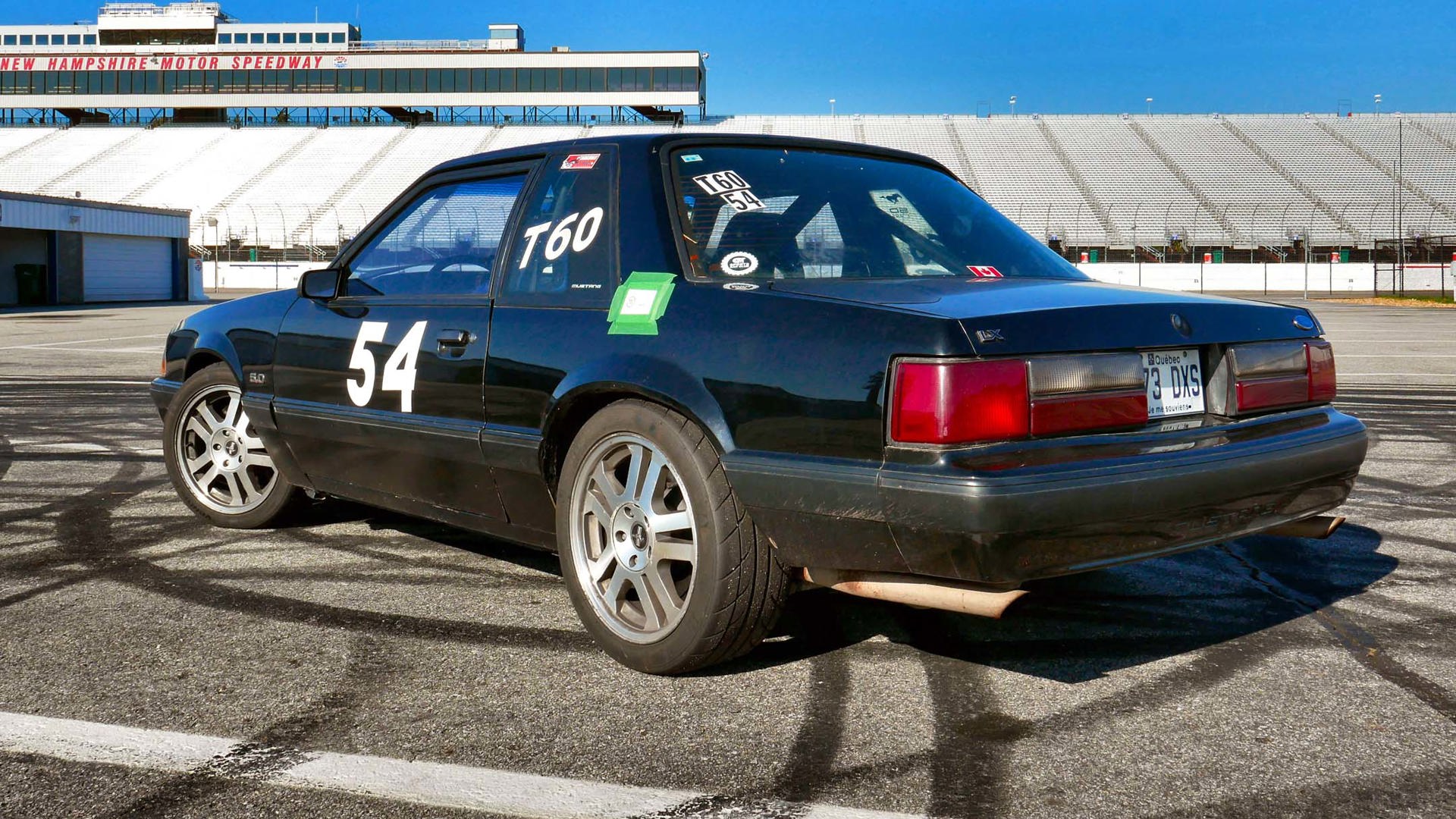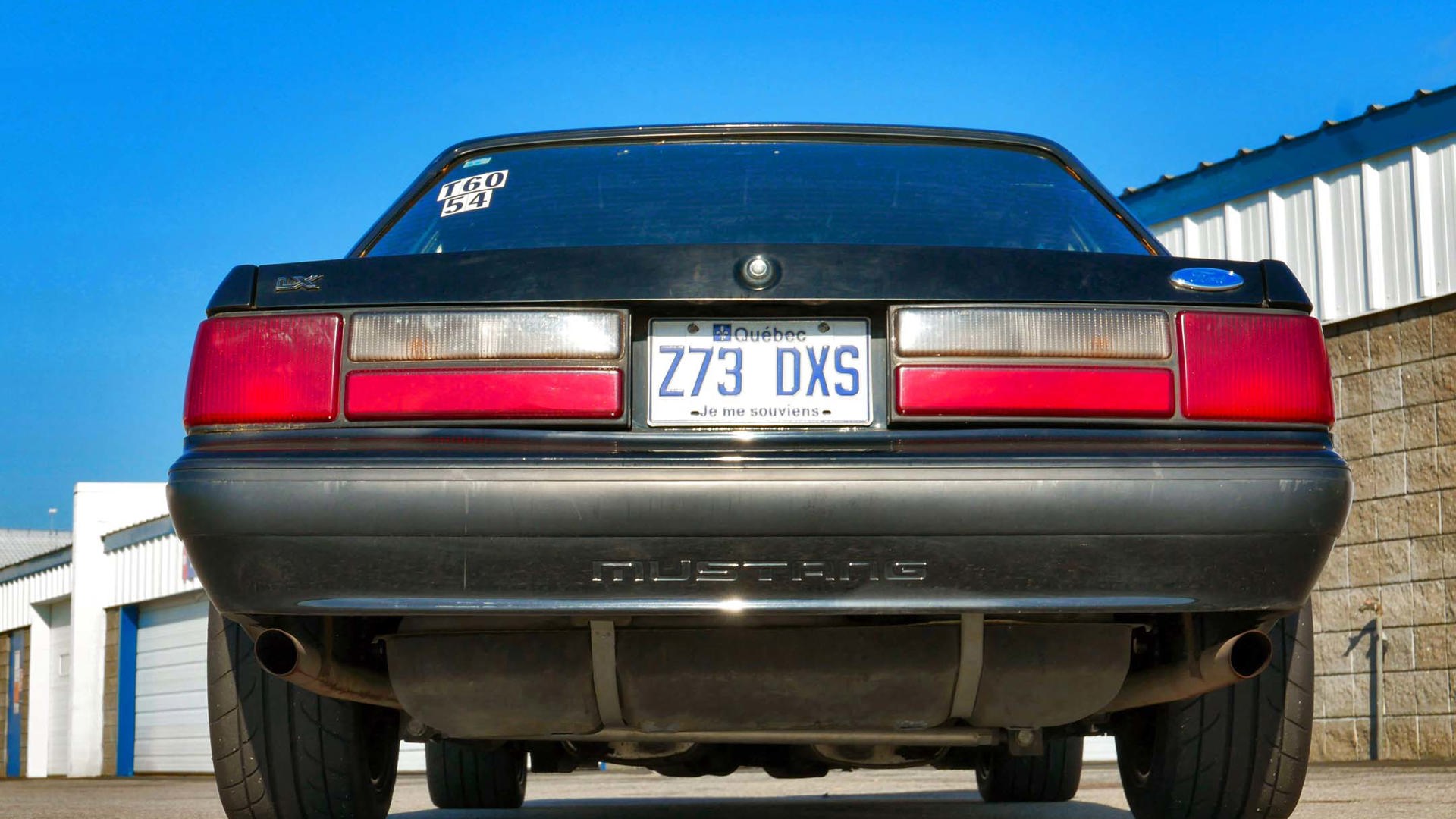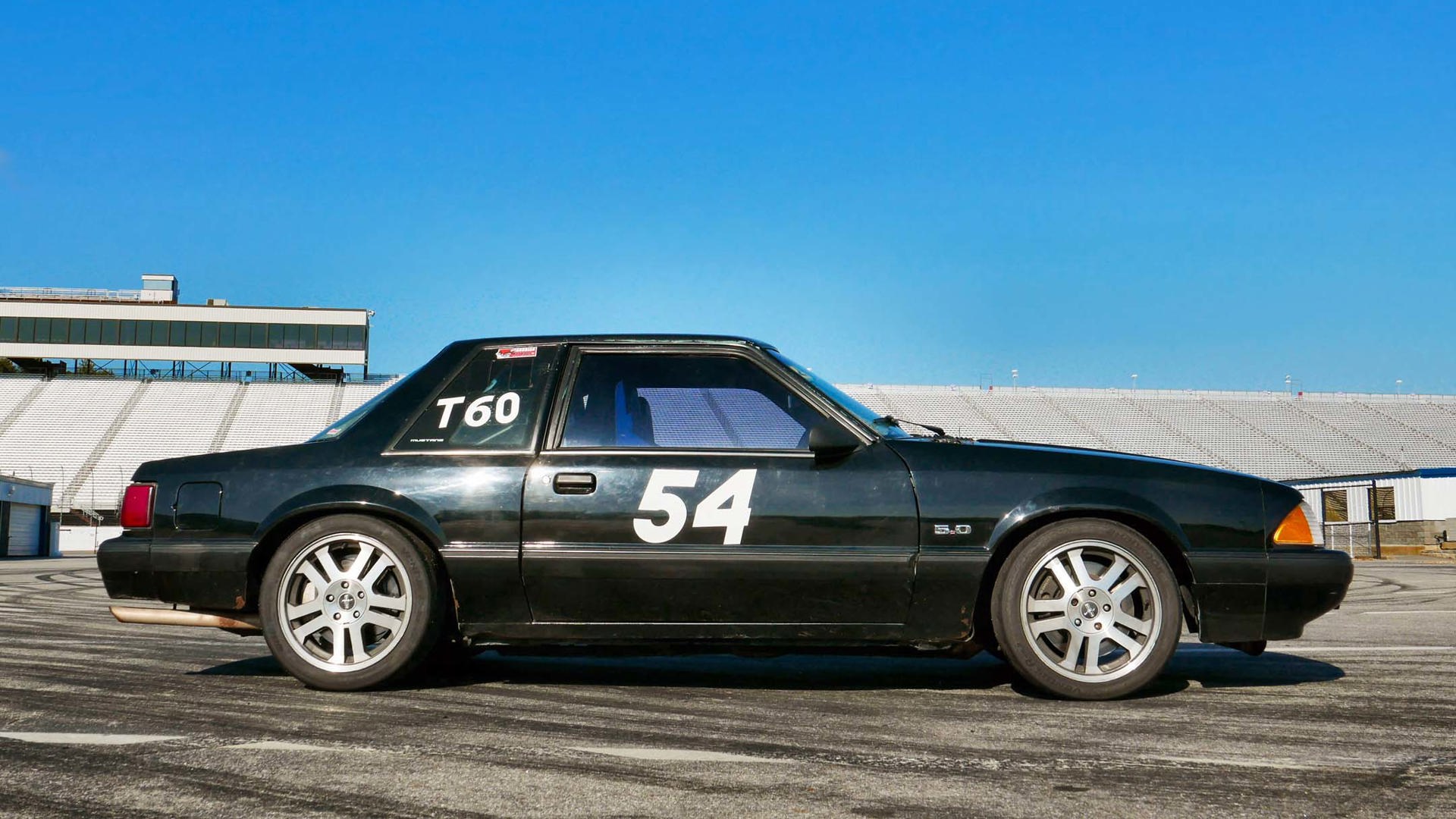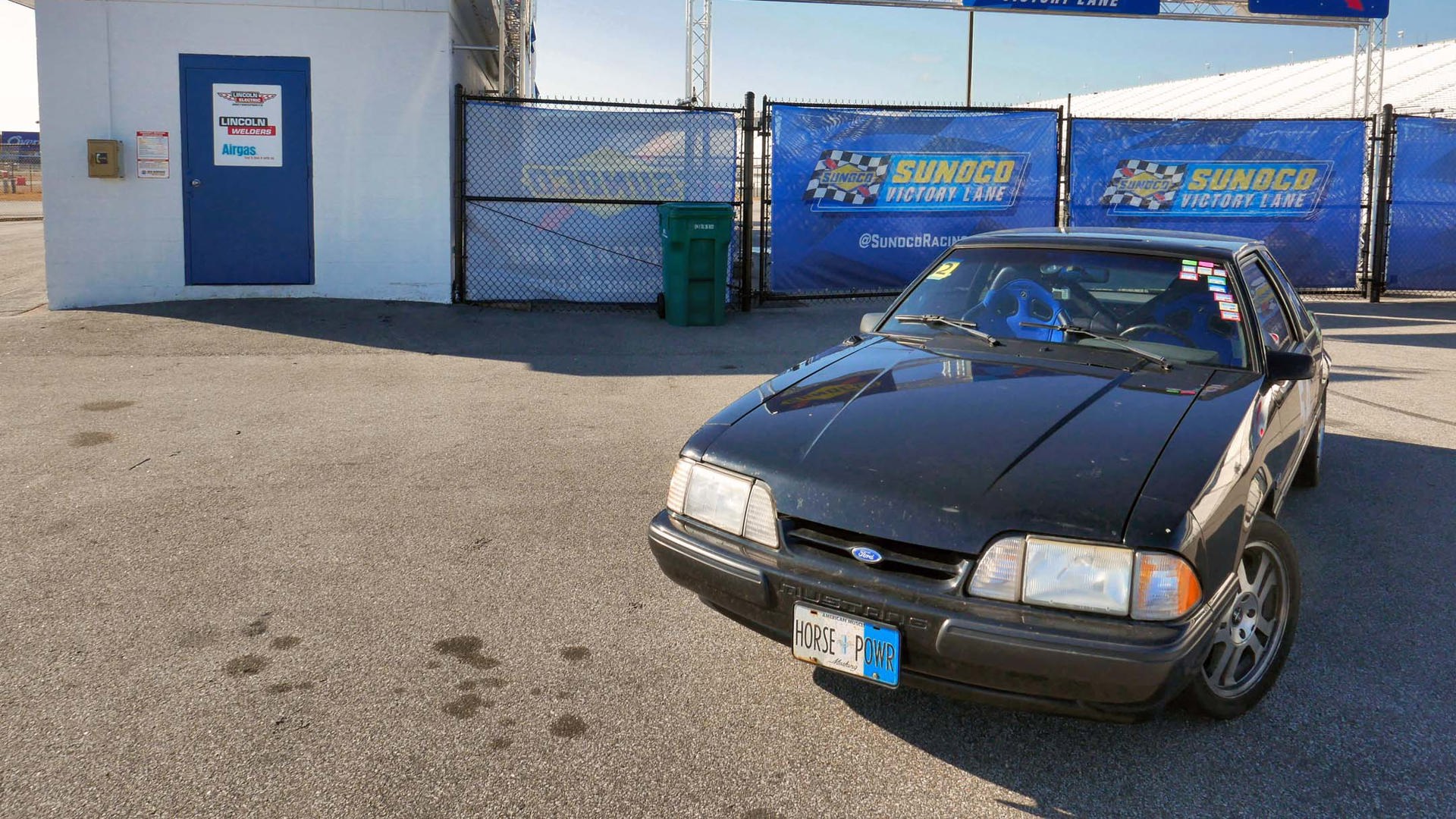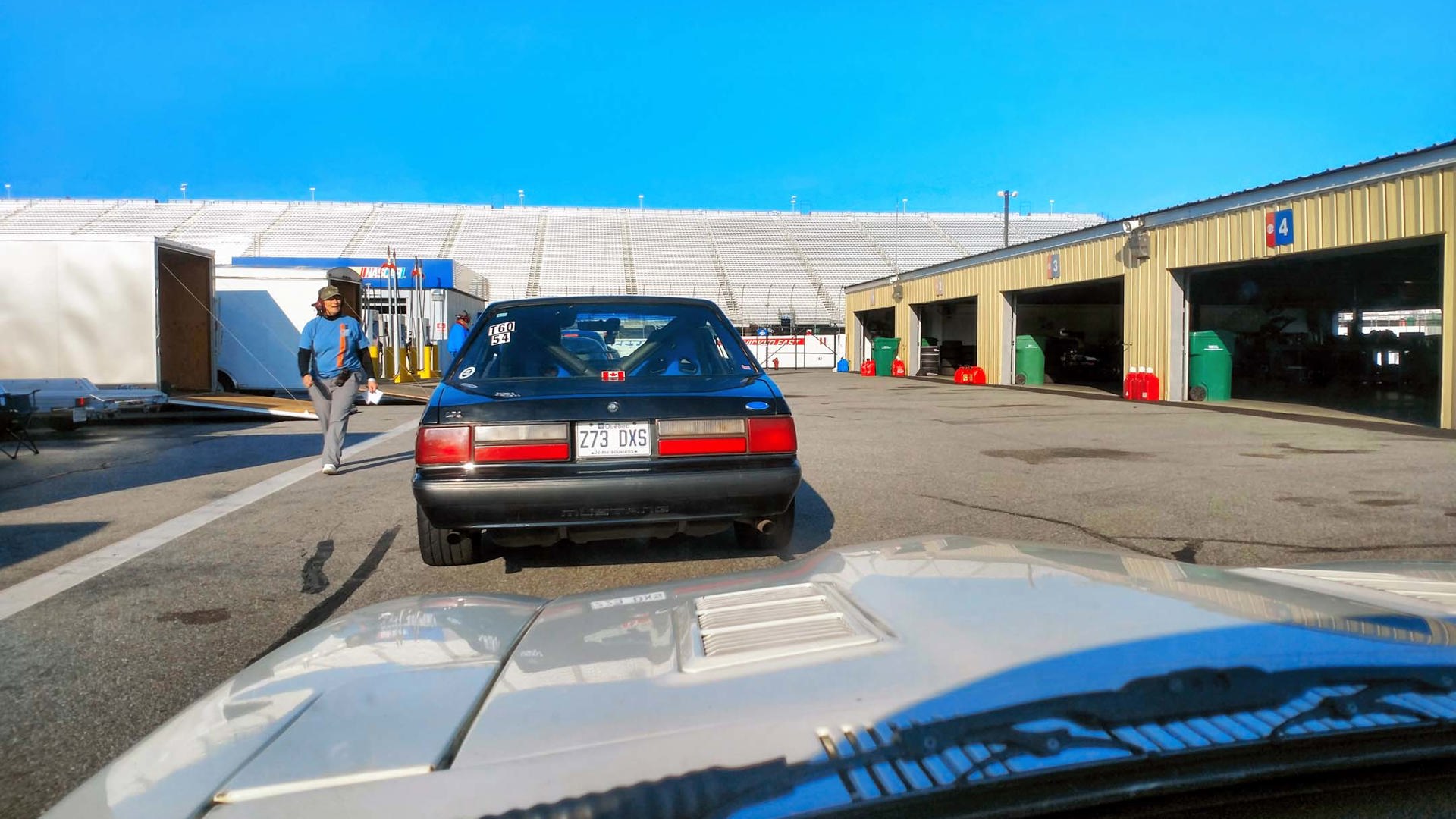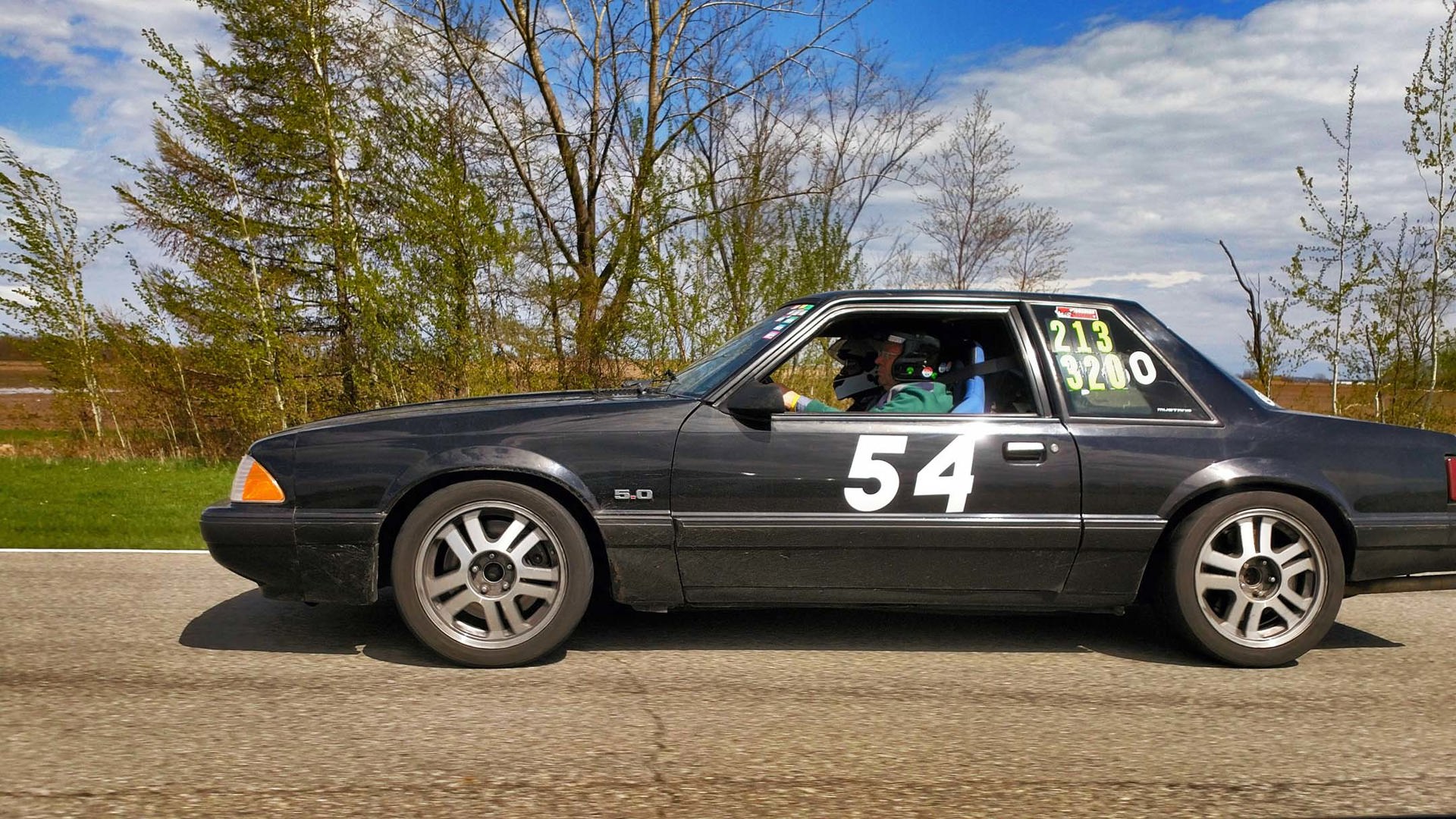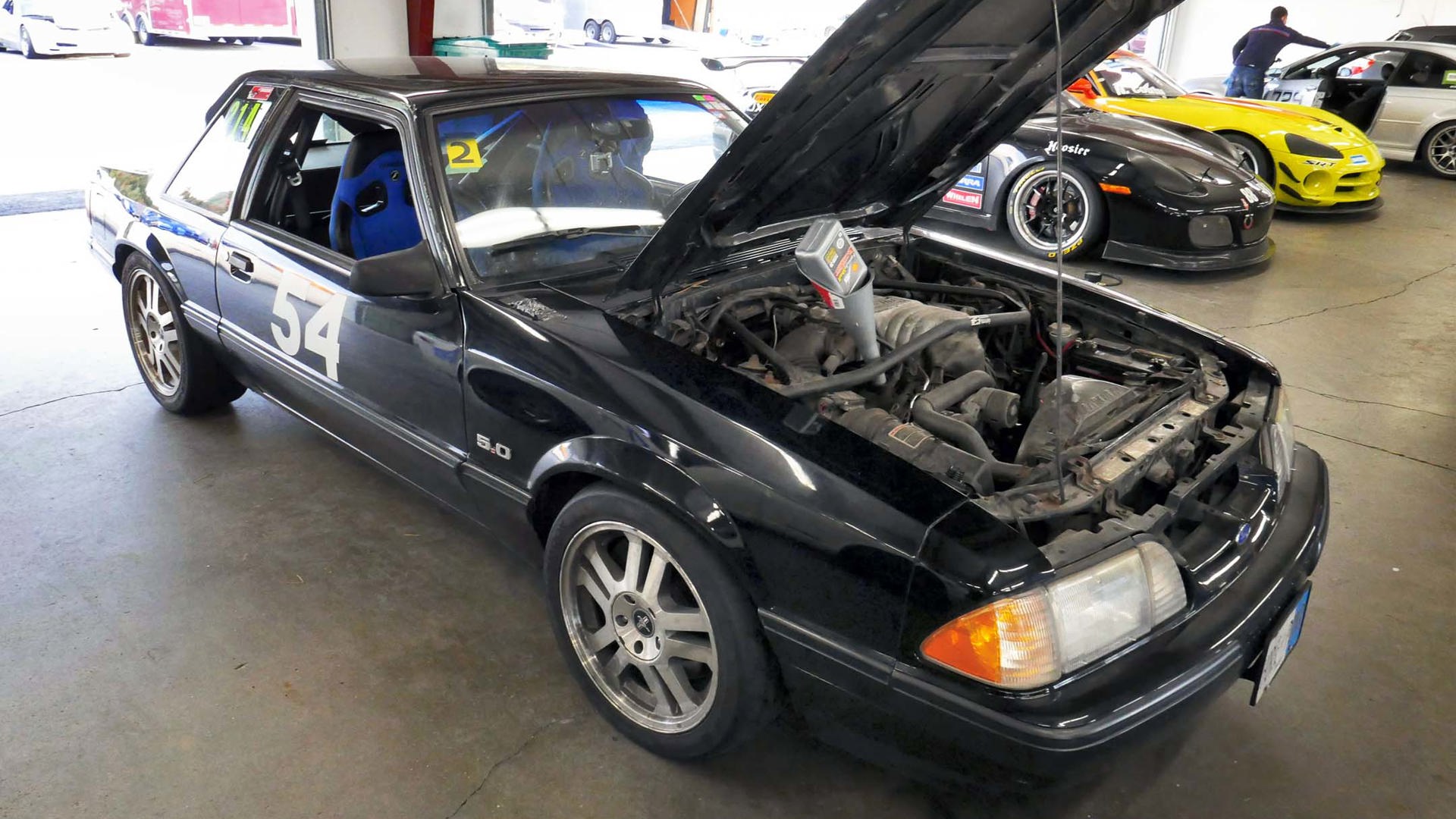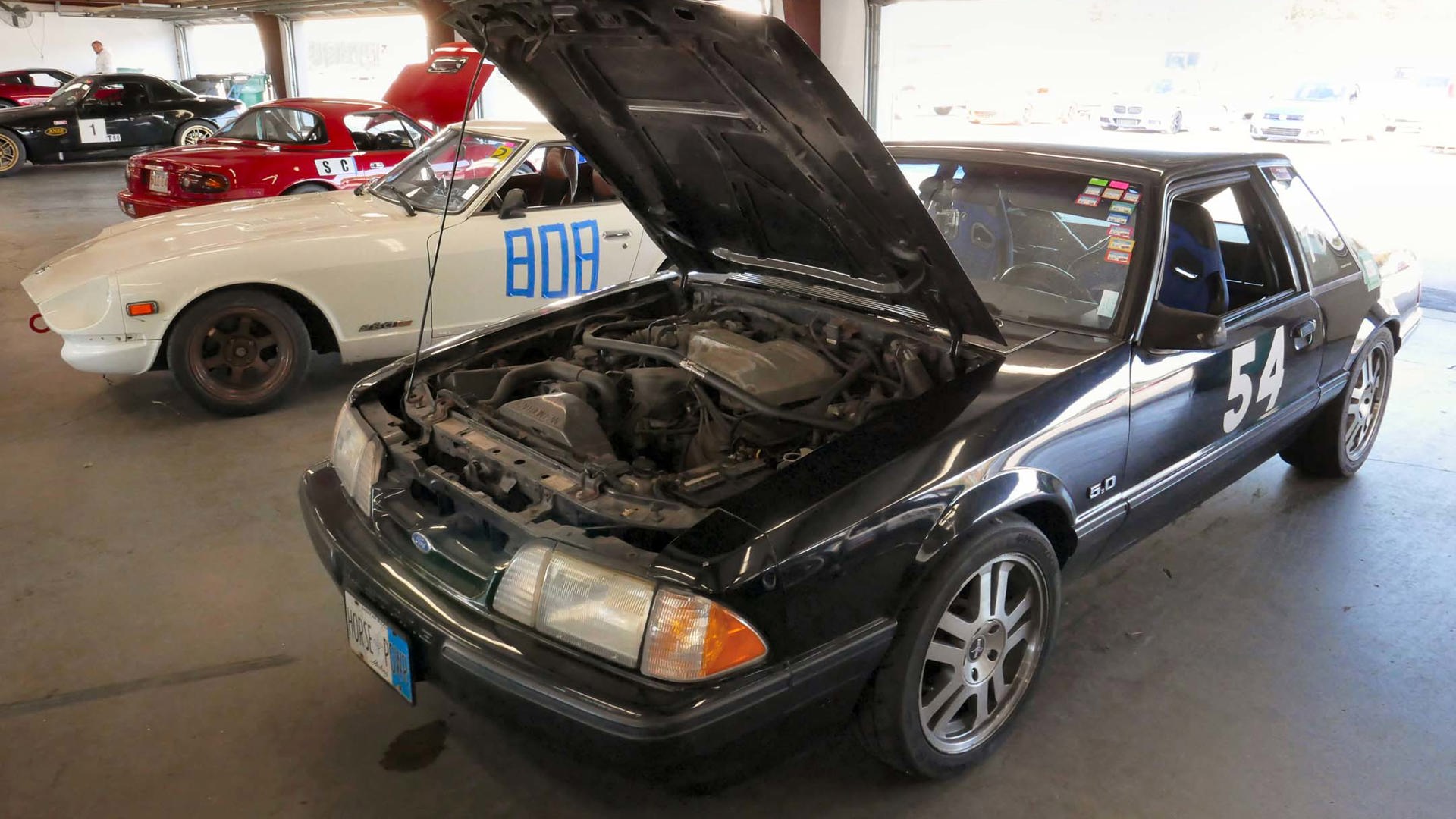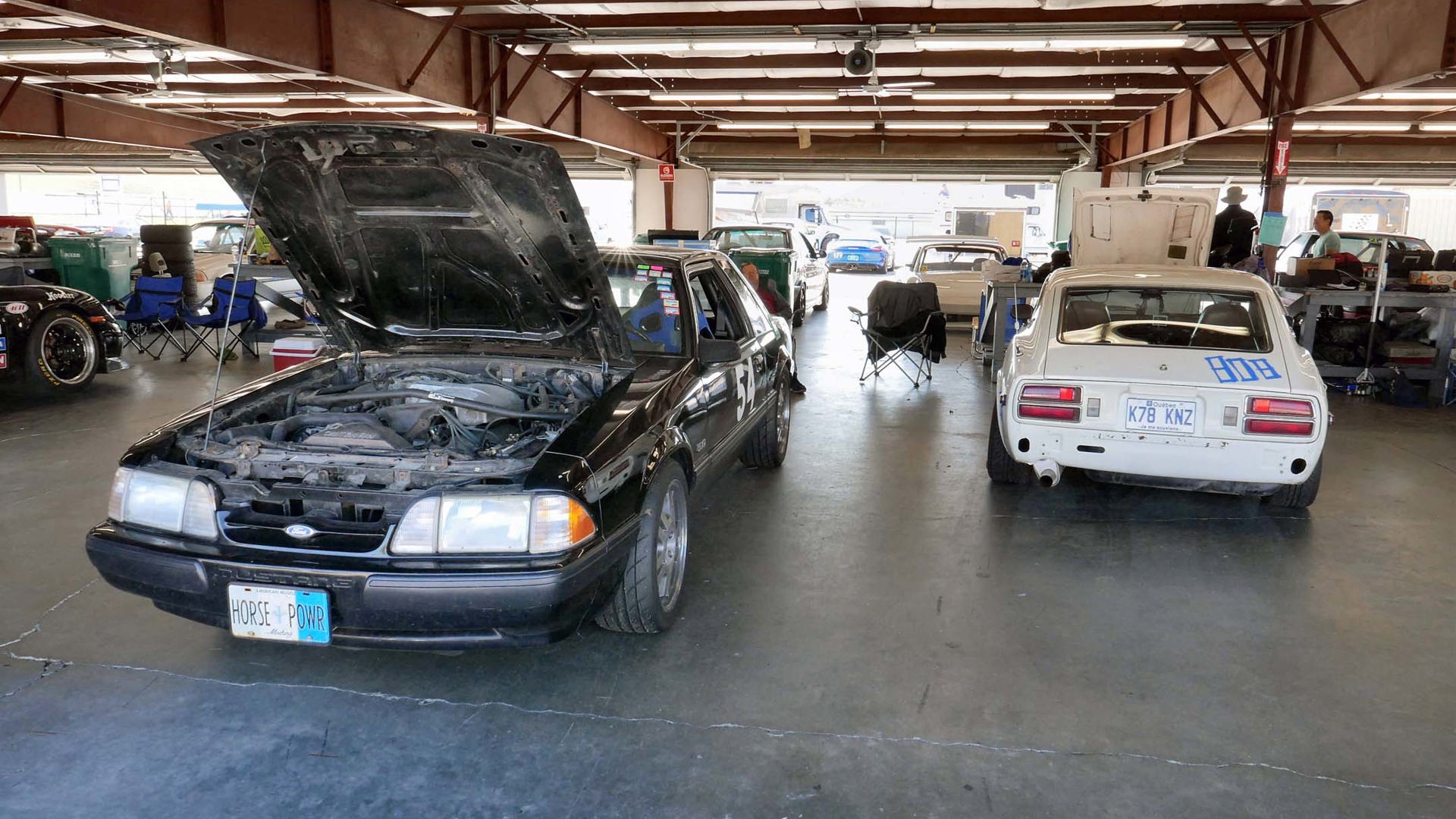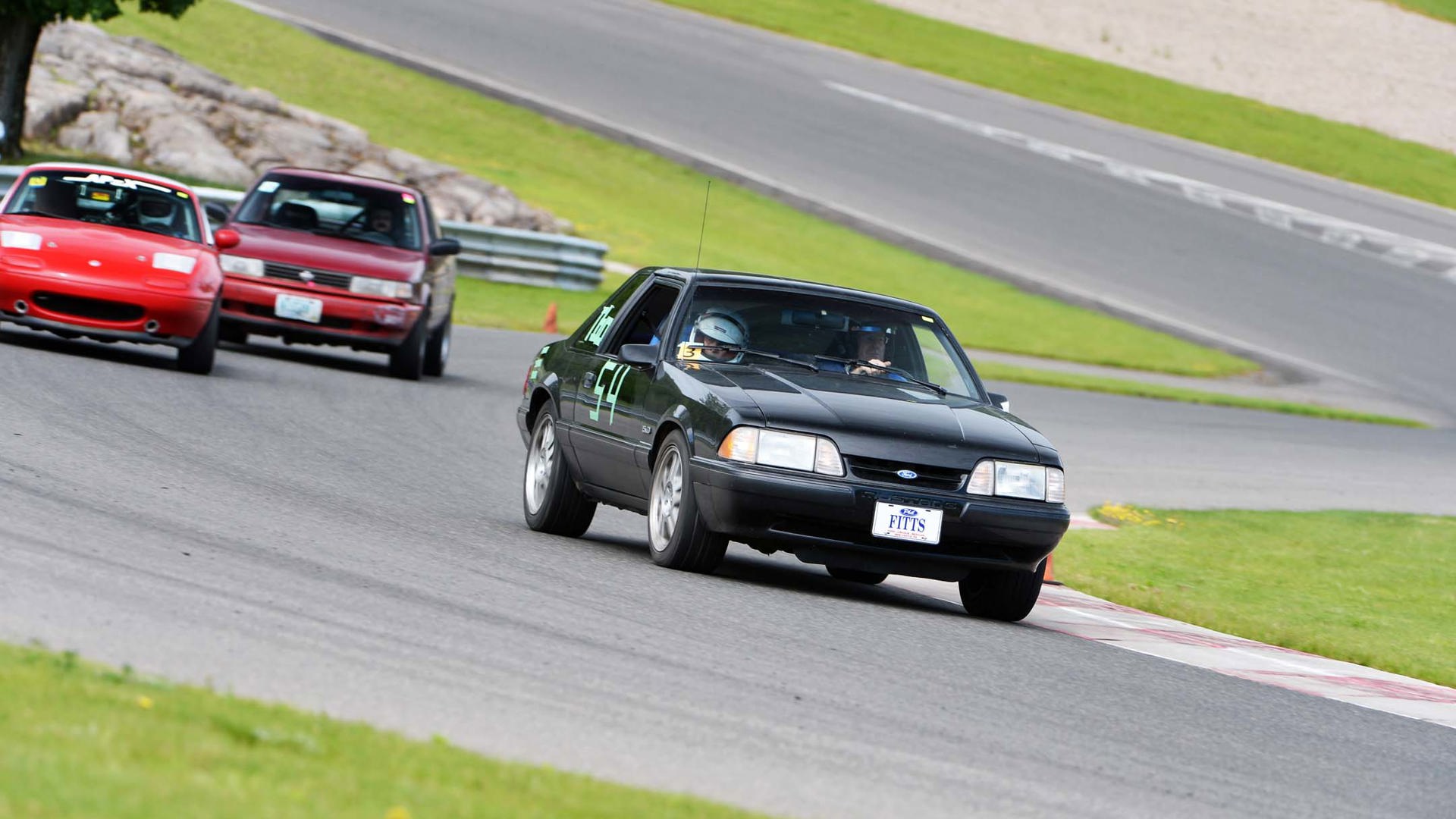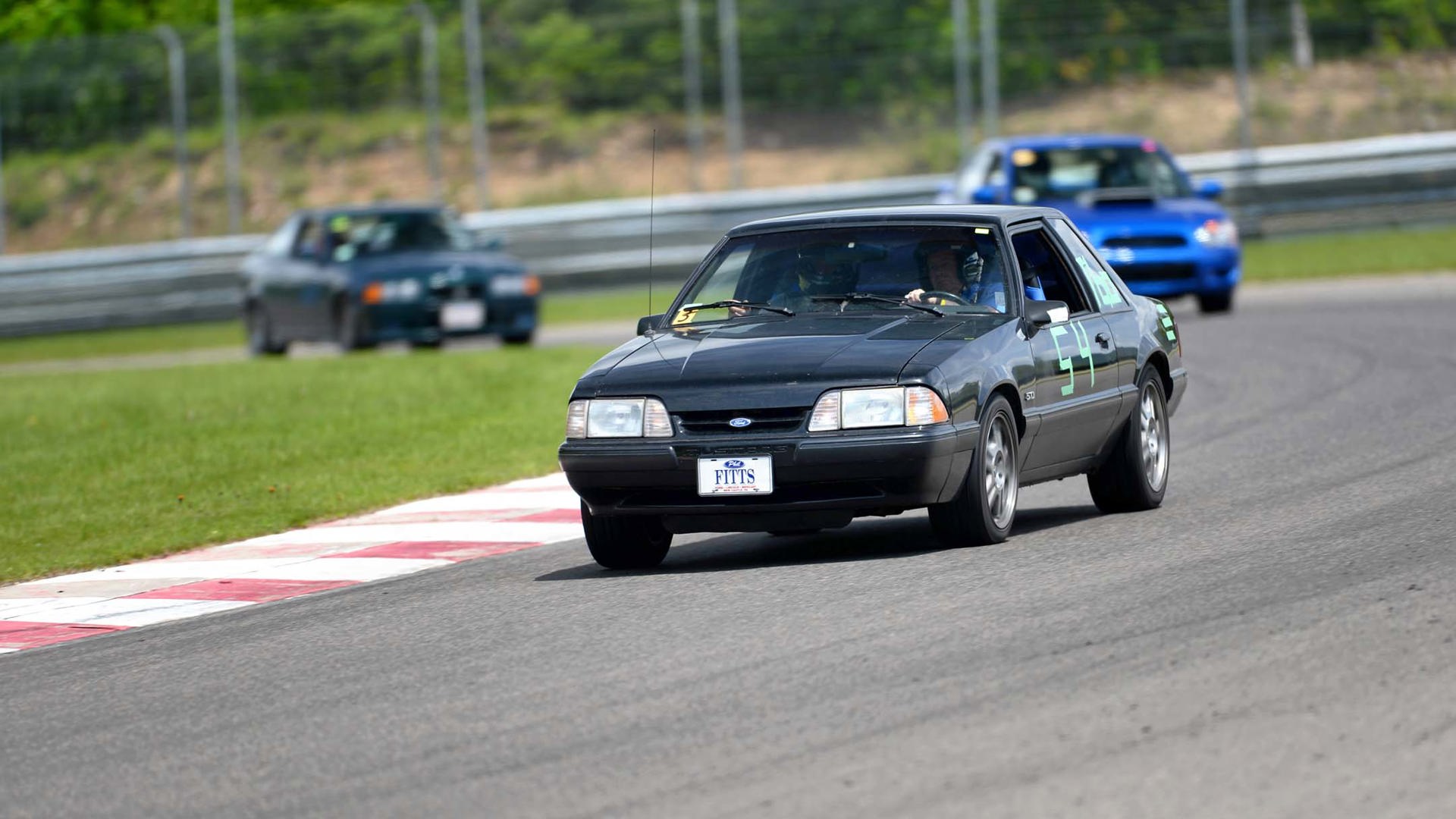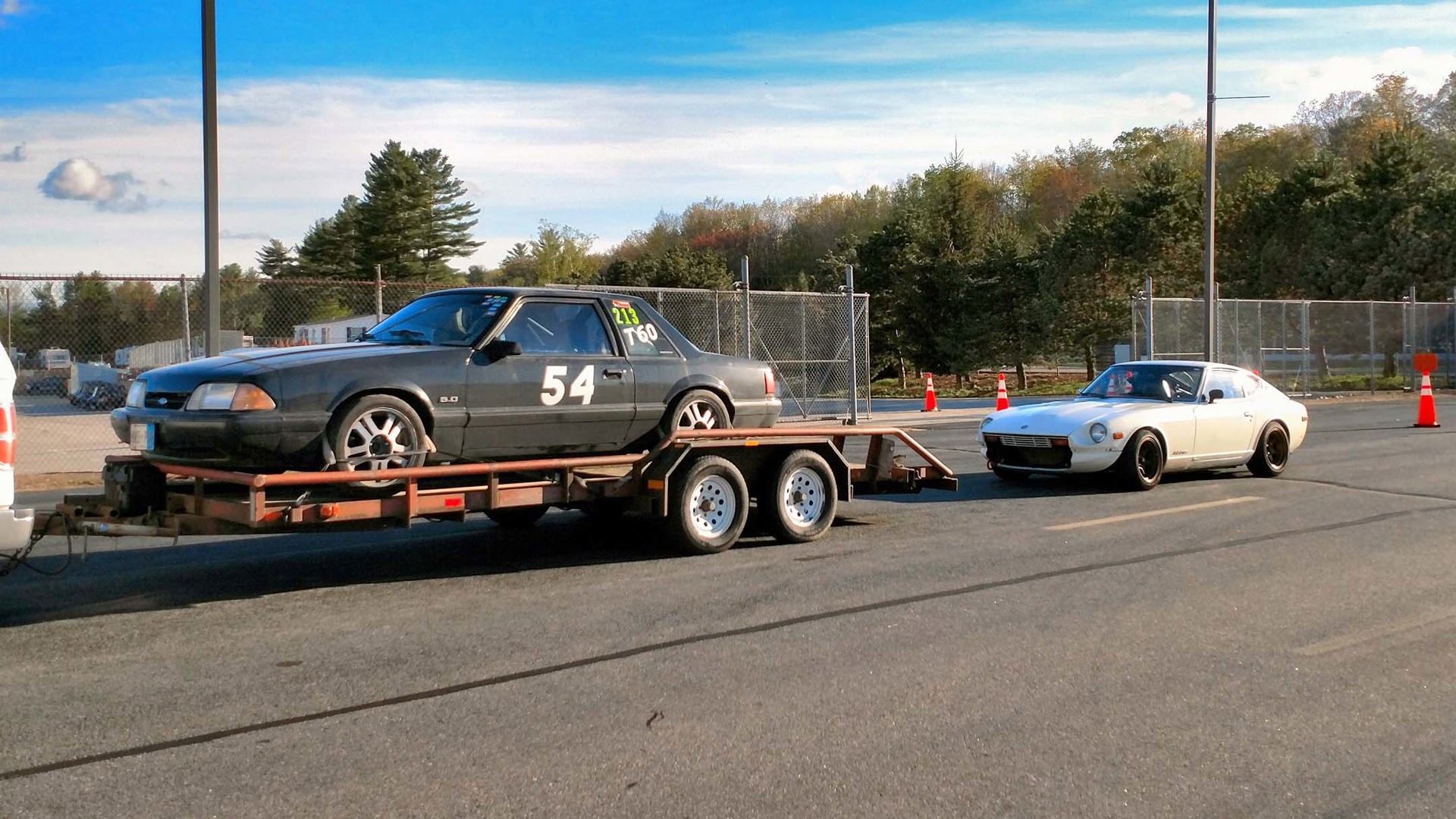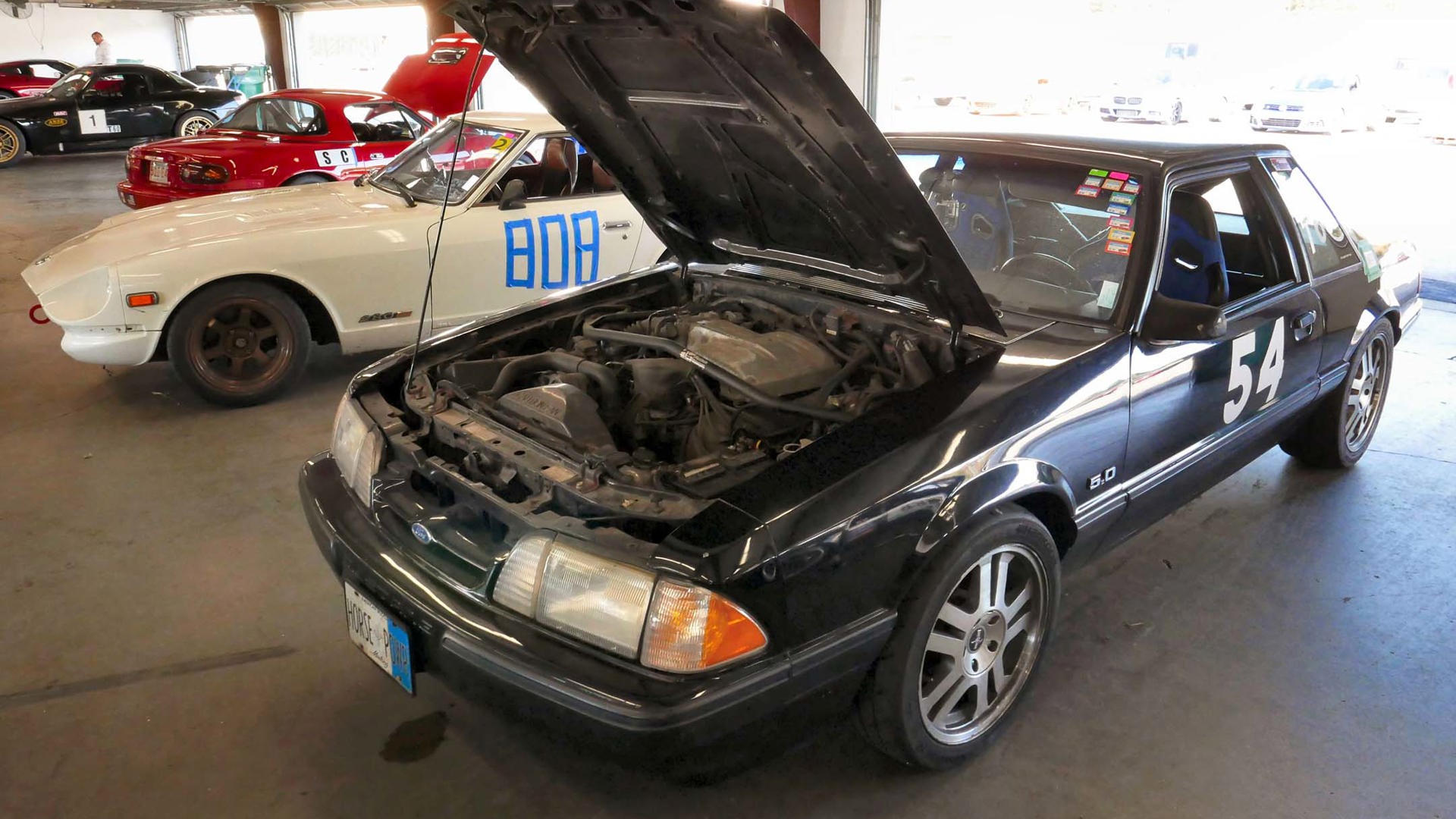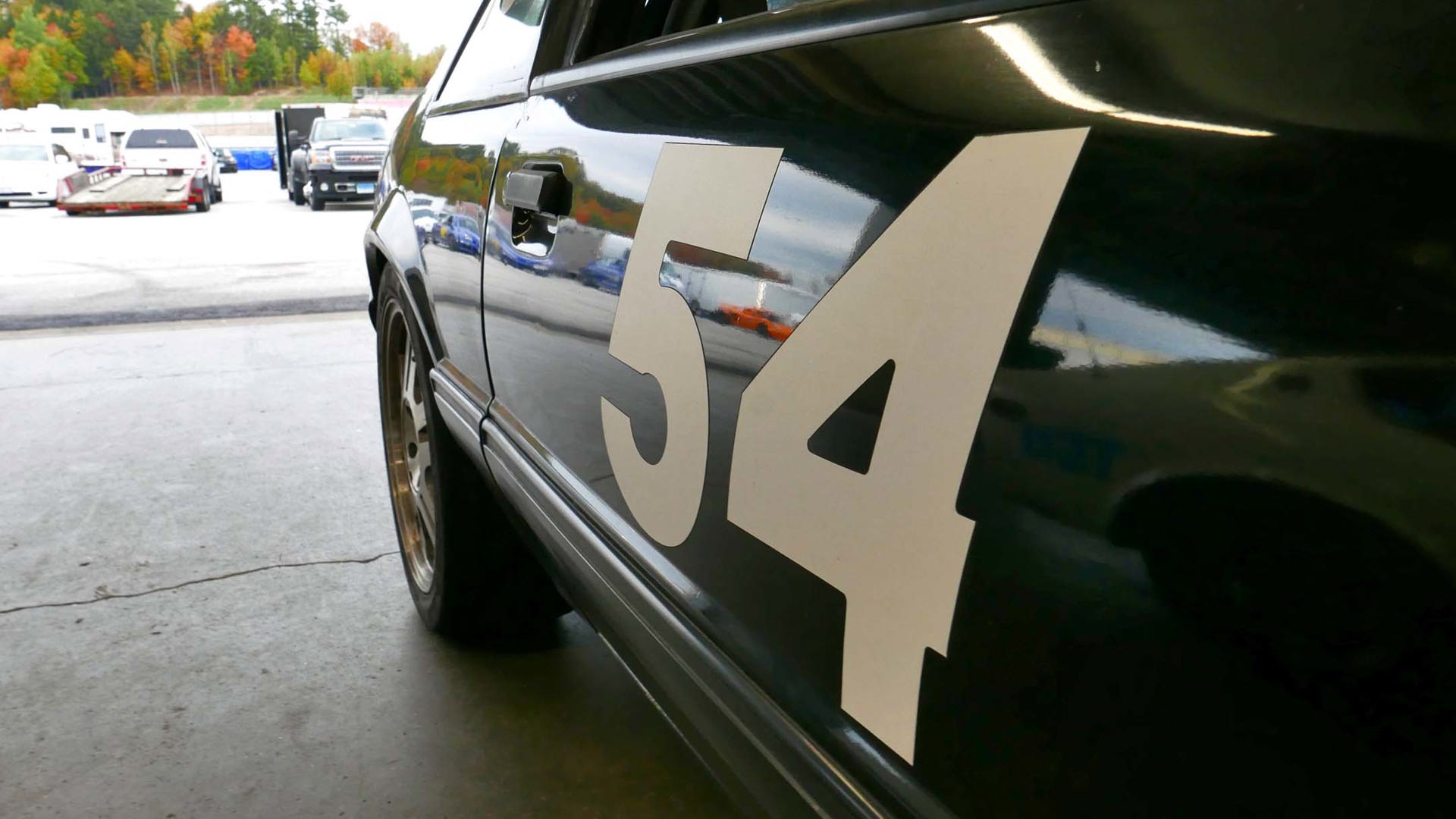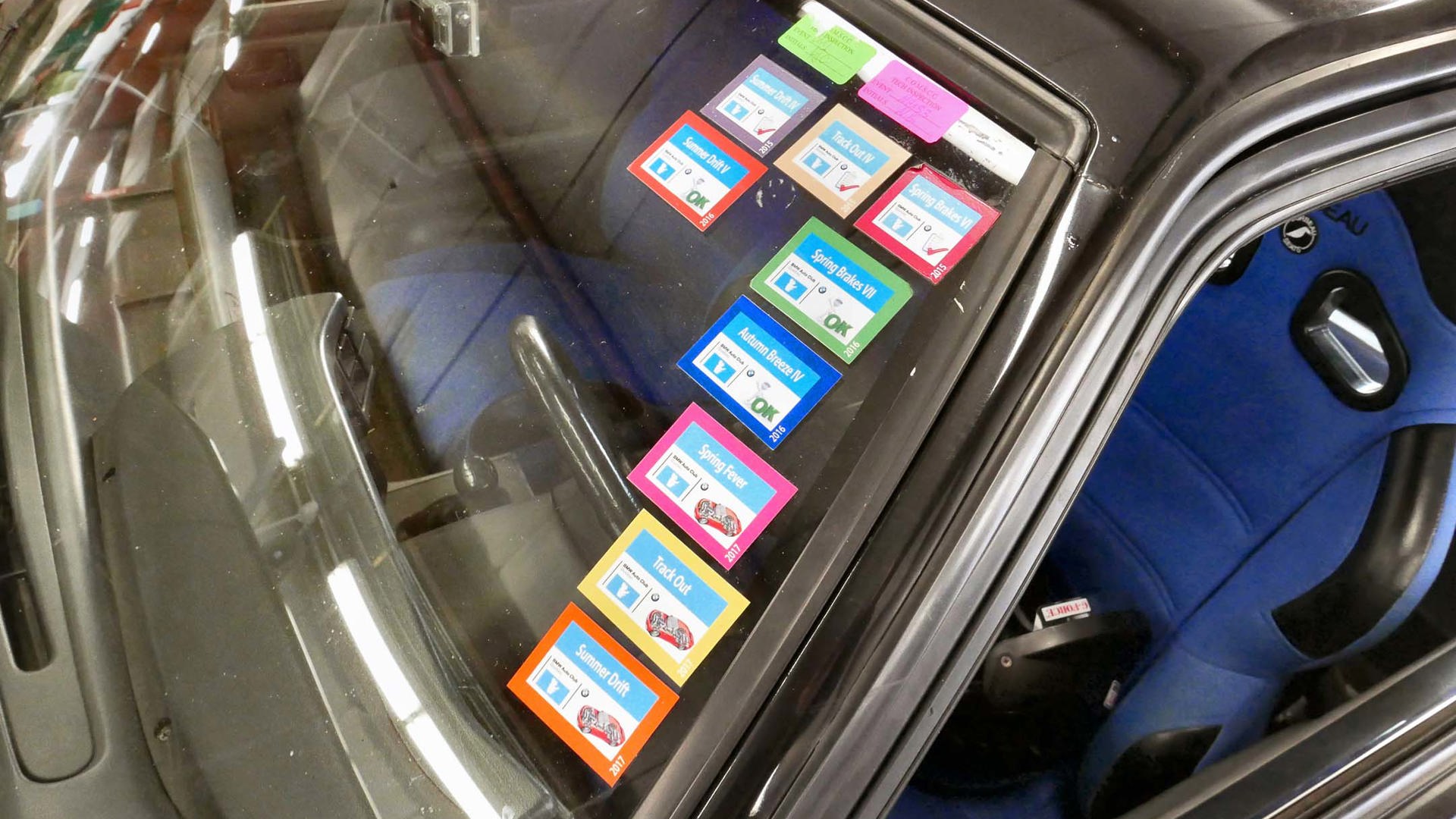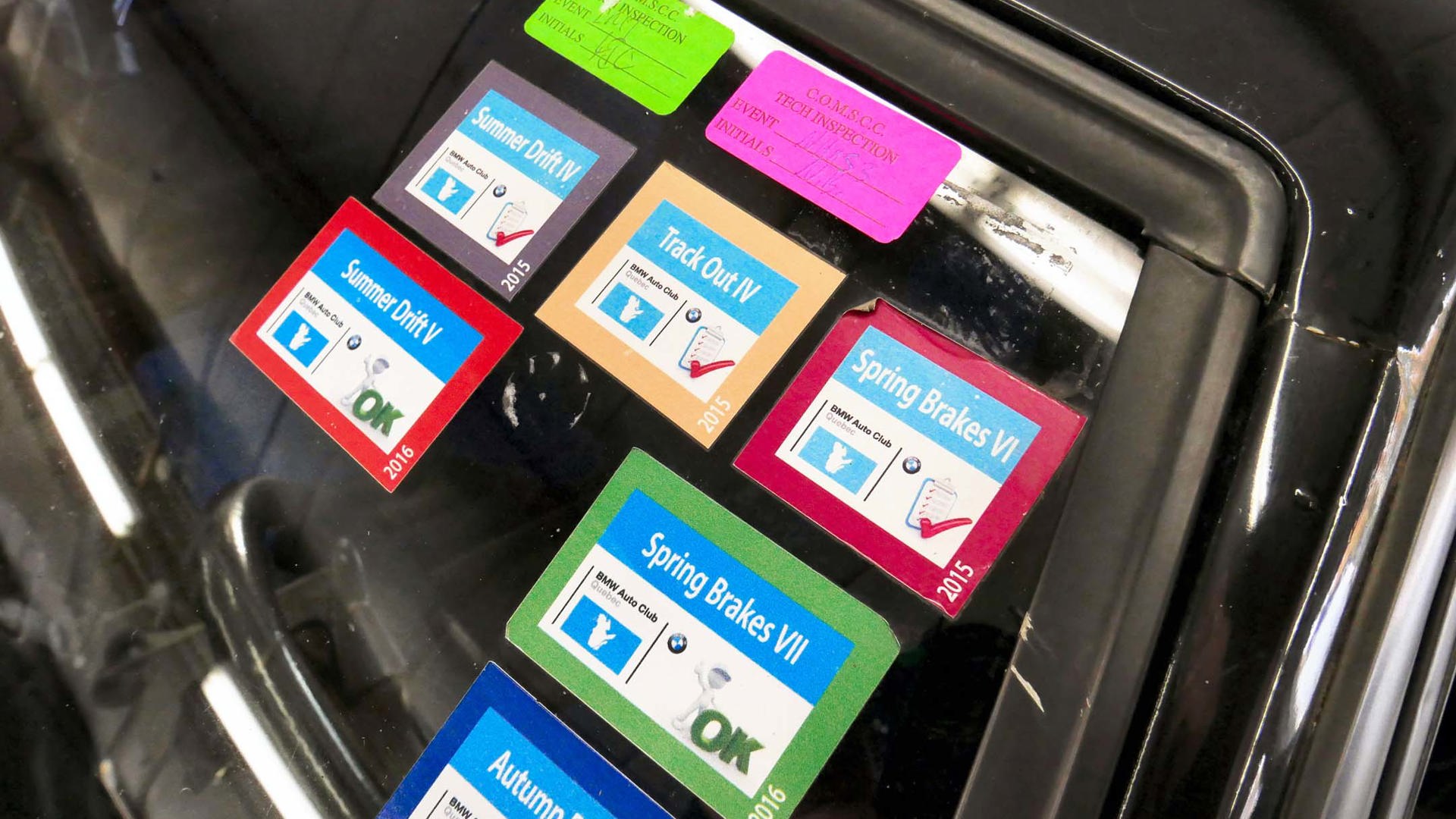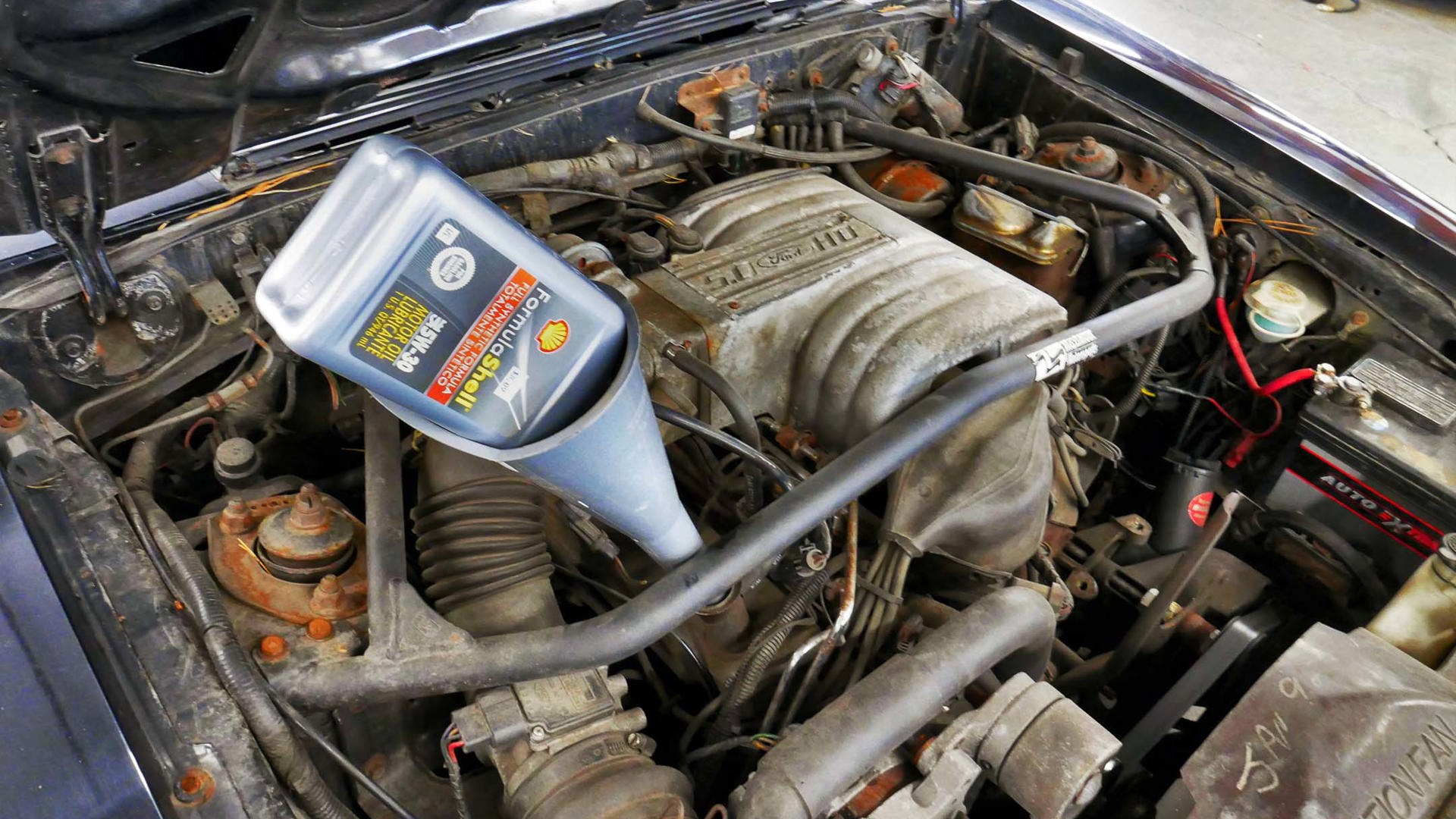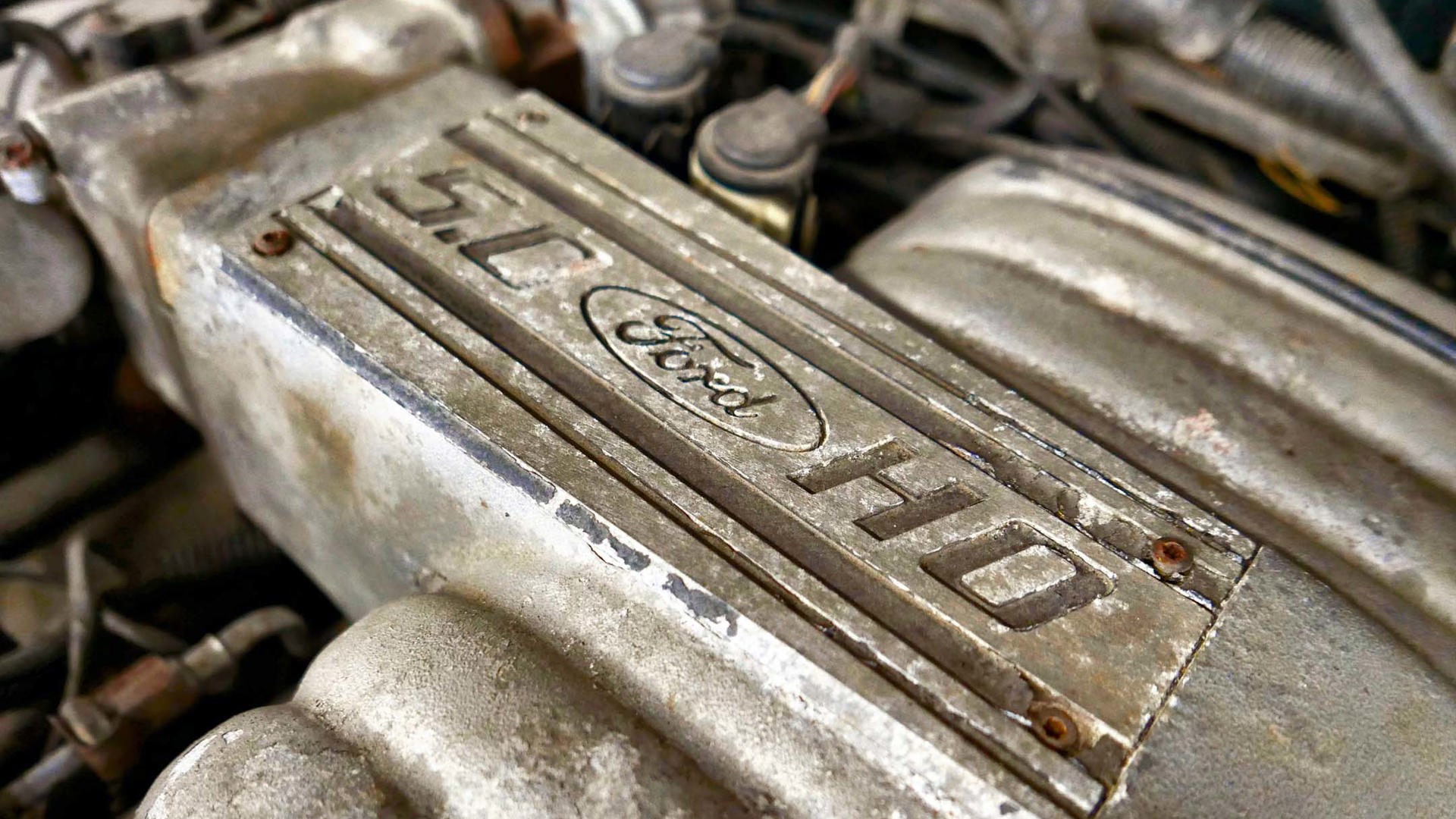The world of motorsports is more regimented than we would like to admit. There are those out there who would prefer to see old-school muscle cars stick to straight-line tests of speed, segregating them from the stables of classic sports cars that crowd road courses and rally stages across the continent. Then there are people like my father, who really could not care less what you think about the fact that his track car for the past several years has been a 1989 Ford Mustang with a 5.0 V8 plopped between the front fenders.
I have to admit that I was one of the ones who tried to talk him out it. When he first expressed an interest in joining me on the track with COMSCC, a Massachusetts-based time trial club that I have been running with all over New England and Quebec for close to a decade, I recommended that he look around for – wait for it – a first-generation Mazda Miata. The lightweight roadster has become a cheap gateway drug to road racing for thousands of novice drivers, as it was for me when I first started out, and it’s still my number-one recommendation for those starting out in the sport.

It seems, however, that I lacked imagination. You see, my dad had grown up immersed in drag racing, Indy car, and NASCAR; and as a young man often took to the strip himself in an array of muscle machines, including a 440-powered ’69 Plymouth GTX. He also happens to bleed FoMoCo blue, and had precisely zero interest in a tiny two-seat roadster. Much more his style was the ’89 Ford Mustang LX that had been sitting in the garage of one of his best friends for close to a dozen years, abandoned there after the man’s son had elected to pursue a more family-friendly form of transportation.
For those unfamiliar with Fox body nomenclature, the LX was the Mustang’s secret weapon. It was the lightest model available with the high-output 5.0-liter V8 engine, in large part because when found in the notchback coupe body style, it lacked the heavy hatch glass and body kit found on the “sportier” GT, and it was also available with a stripped-down interior. If you’re going to build a drag car, this is the Mustang you choose. If you’re going to build a track car, well, okay then.
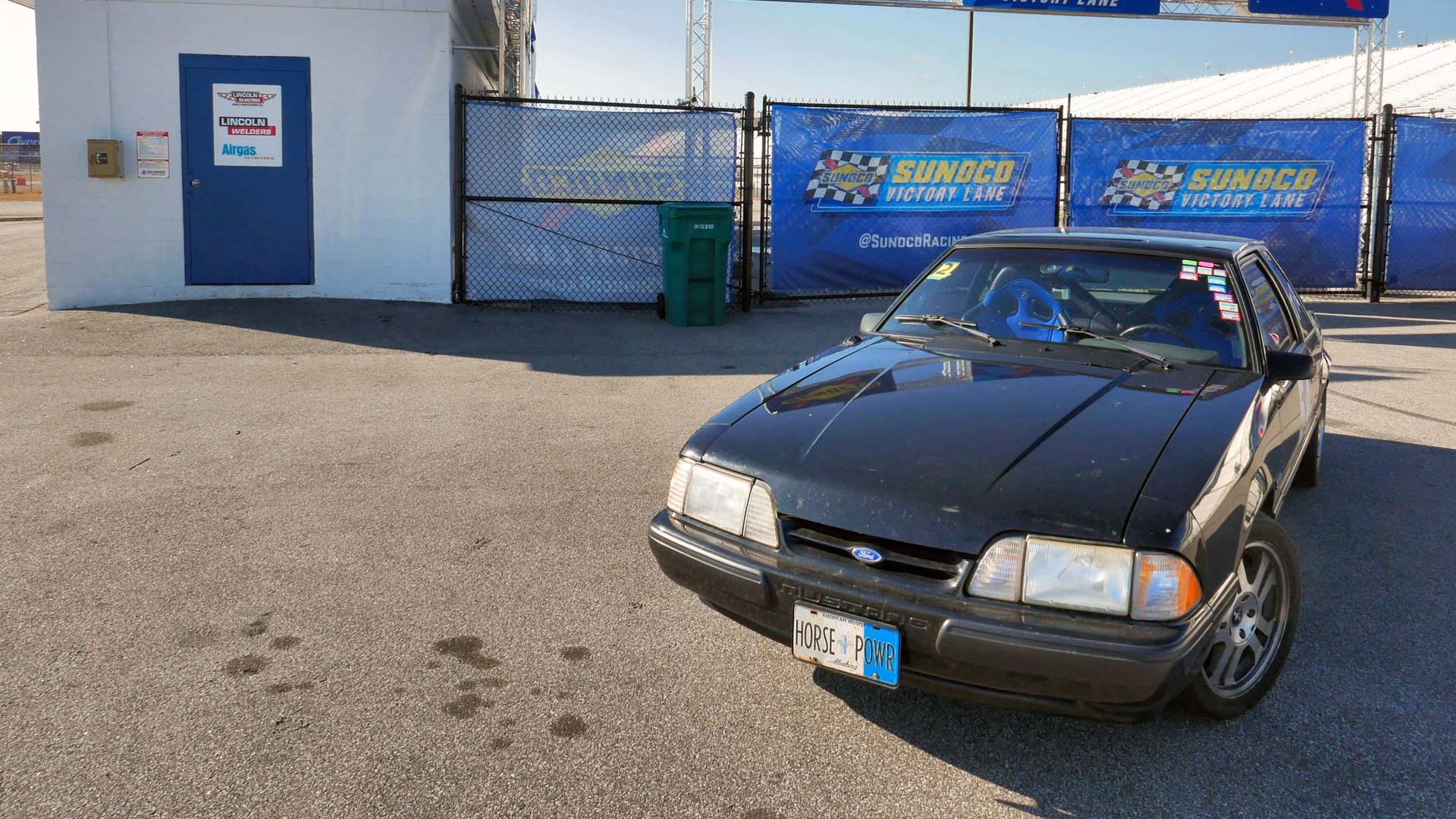
Regardless of my helpful and no doubt insightful opinions on the matter, Dad was not to be deterred, and work began on updating the Fox to tackle corners as well as it did quarter-miles. Given that the notch’s storage space wasn’t exactly what you would call dry, the first order of business was replacing the floor pans, brake lines, and any other components that had been gradually eaten away by moisture, corrosion, and neglect.
The engine, however, was in fine fettle, a replacement unit installed by Ford a few years after the Mustang had been bought new. In fact, the drivetrain would be the one part of the car my father would completely ignore while modifying the car for track duty, content with its relatively quiet stock exhaust and factory rating of 225 horses and 300 lb-ft of torque. Eventually, I would gift him a set of 3.73 gears and a fresh clutch pack for the car’s Trac-Lok rear end, but other than that, the original five-speed manual transmission and clutch went the distance.
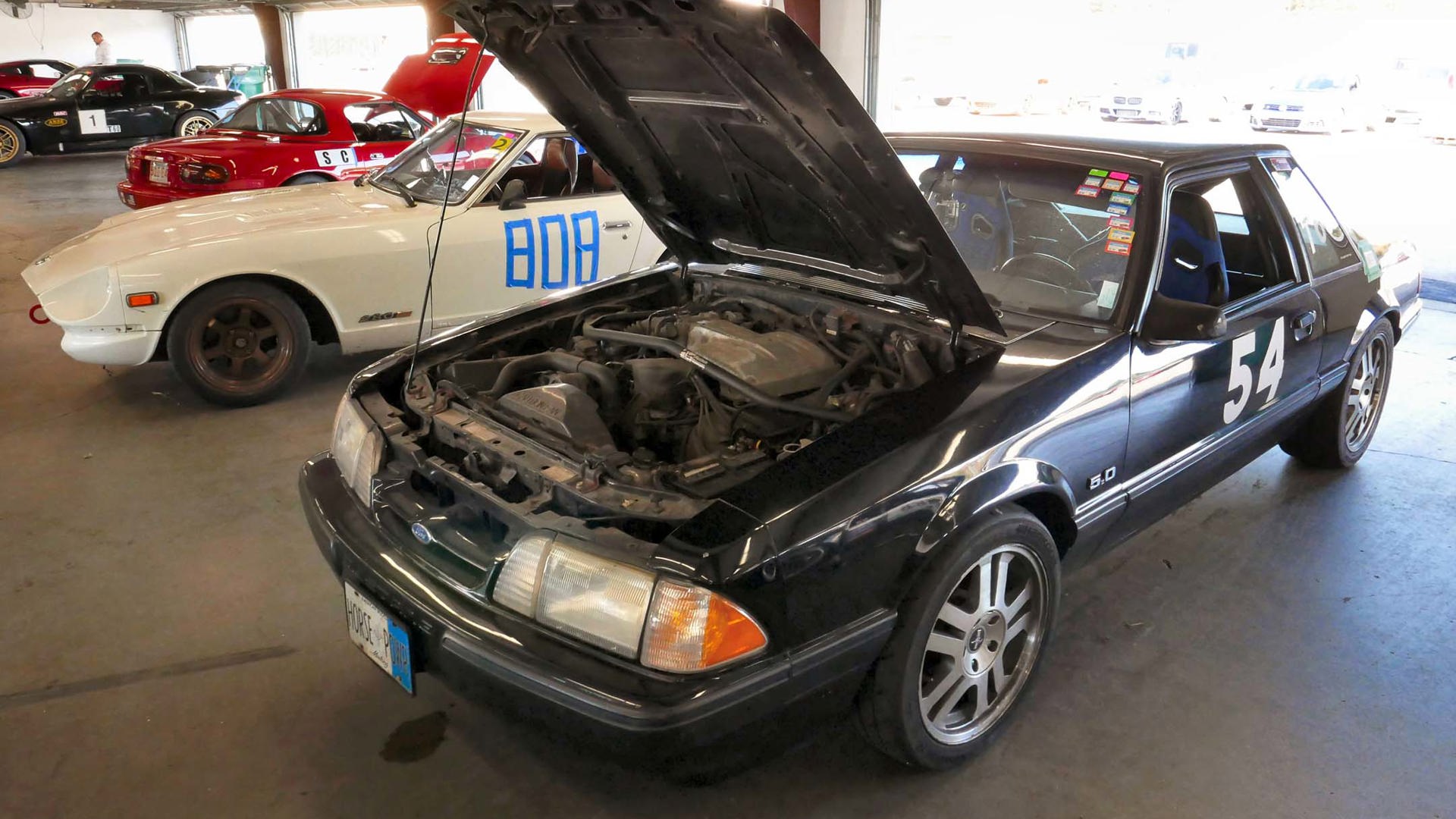
The rest of the Mustang was a different story. Anyone who’s ever driven a Fox body car is instantly made aware of just how little Ford engineers prized torsional rigidity in the ’80s, as this platform – even when new – boasts a chassis that feels like a worn-out slinky around every corner. Dad went all-in on frame rail connectors, new sway bars, and eventually a custom-welded roll bar, all of which did a fantastic job of tightening up the under-car noodle. Also tapping out were the four-lug hubs and rear drum brakes, with a complete disc-brake kit from SSBC installed with a bias controller and Hawk pads in order to dramatically improve stopping power. Rounding out the improvements made to the car’s handling were a set of Ford Racing lowering springs and sport shocks at all four corners, a Panhard bar, and 17-inch 97-99 GT rims wrapped in Hankook RS-3 rubber.
It only took me a single session behind the wheel of the LX to realize how wrong I had been to ever suggest that maybe the Mustang wasn’t well-suited for track duty. With the help of his circle-track friends, dad had been able to, over the course of several years, develop one of the best-tuned 80s-era road course cars I’ve ever had the privilege to drive. With only 3,000 lb to deal with, the 5.0 V8 offered more than enough motivation to accelerate the Ford with authority in the straights, while that same relatively modest curb weight was remarkably willing to go where I pointed it after braking for a corner.
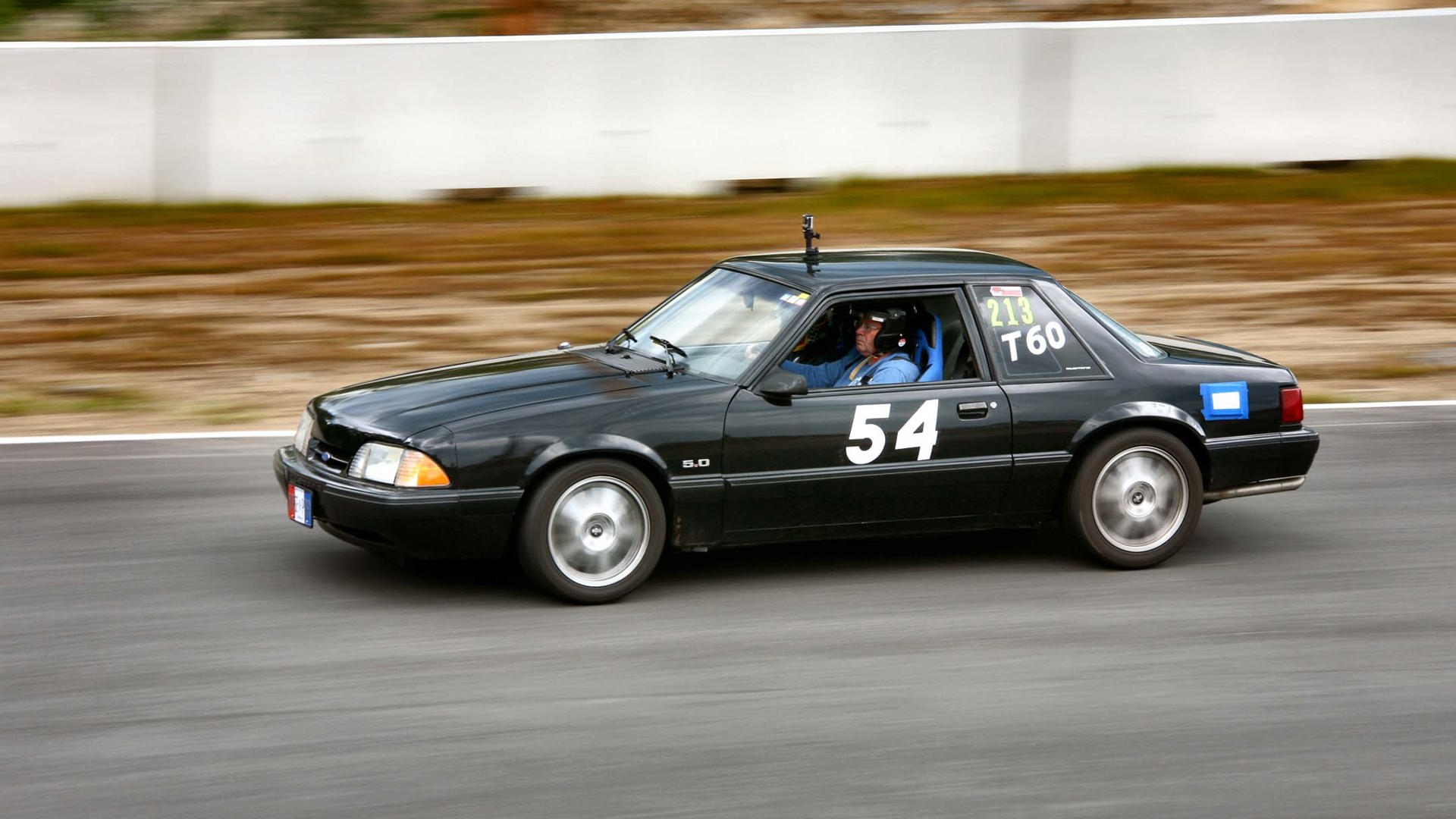
Provided, of course, that you did your prescribed stopping in a straight, steady line: the car’s Achilles’ heel remains its live rear axle, which doesn’t take kindly to being asked to both brake and turn at the same time. I’ve spun the car at least three times on the track after forgetting this simple, salient fact (to his credit, my father has only ever spun once despite having driven the Mustang for at least 10 times as many hours). I’ve also never stepped out from the driver’s seat without a huge grin on my face.
More to the point, the Fox is fun. It may not be the fastest way around the track (something that could be corrected with the judicious application of power-boosting bolt-ons) but it’s an absolute joy to drive at speed. It’s also a conversation starter, as ’80s Mustangs are a rare sight at most track days, kept at bay by the same prejudice that initially had its hooks in me too. To be able to pull into a garage bay with my dad beside me, both of us piloting uncommon metal in a sea of Miatas, BMWs, and Porsches, is well worth any perceived performance trade-offs associated with the platform.

Despite its years of loyal service, my father’s Ford Mustang LX track car is about to be retired in favour of its replacement, a 2005 Mustang GT he had been lusting after and finally tracked down at a reasonable price. I wasn’t able to convince him to stick with the Fox, upgrade the engine, and continue to enjoy the fruits of lightweight motoring. Instead, he will be stepping into a much heavier and more powerful car, although one whose modernity still bears the live axle asterisk. This past October marked the Mustang’s final day of being flogged around the south oval configuration of New Hampshire Motor Speedway, the quickest and most challenging version of that track, and a more than fitting farewell.
The 5.0 will be sold, roll bar and all, to whoever is willing to be the next caretaker in its evolution from Vanilla Ice lyric to track day terror. I wish I had room for it in my own garage, but in truth it doesn’t matter what Dad’s driving when he lines up beside me on the starting grid next year. What’s important is that we’re still there together, weekend after weekend, all summer long. The Mustang might have earned its retirement, but we’re both a long way from the checkered.
The important thing is that we keep travelling – racing – together.
